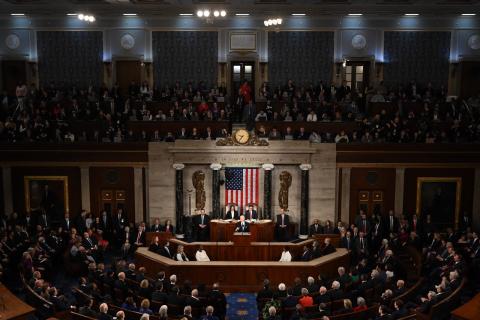
The discussion of the pros and cons of warship building in Australia has, with some honourable exceptions, left a lot to be desired. Stephen Grenville's Interpreter post 'Opportunity Cost in Australia's Future Submarine Decision' exemplifies some of the most significant deficiencies.
Straight off the bat we have a siloed discussion from Grenville: 'I'm only too ready to leave it up to strategic experts such as Rear Admiral Peter Briggs to sort out how many submarines we need. I'll stick to the economics', he writes. Actually, it is not possible to draw sensible conclusions without understanding the national strategic basis for acquiring a given number of submarines, the impact the method of acquisition (continuous build vs a batch build) has on the operation of the Navy and the broader ADF, and the implications for national industry and manufacturing. While tackling those issues might be a challenge in a single Interpreter post, I think it is a challenge to be accepted, not ignored.
Next, there is the interesting assertion that 'taxpayers were under-represented' at the Senate inquiry on the future of naval shipbuilding. [fold]
While I haven't reviewed the witness list in search of a taxpayer representative, I think it reasonable to assume the Senators on the committee might play some role in representing taxpayers. In fact, rather than running down the value of the witnesses, I think we should be glad that subject-matter experts, many with decades of experience, are contributing to the discussion. There is no requirement to agree with everything an expert has to say, but should we regard knowledge of a subject as a prima facie case of bias.
Finally, there is a narrow discussion of opportunity cost; narrow because it looks only at one half of the opportunity cost question, that of the resources that will go to building the submarines. What is the alternative use of those resources with a 'higher social value,' the benefits of which Australia will forgo? Perhaps it is a question on which the taxpayers' representatives might be expected to make a judgement.
So what should a discussion of submarines and economics involve? Well, it should start with attempting to value the primary output of Australia's submarine capability: strategic deterrence.
This is not a trivial problem, but in the spirit of attempting to answer a difficult question, here is a start. Strategic deterrence acts by shaping the choices of potential opponents. While this can take many forms, the most fundamental is that another nation would chose not to attempt to invade Australia or to use military force against our interests out of concern that Australia could defeat the action or mount a counter-attack on the adversary's own interests. So for every year in which Australia does not encounter such a circumstance, we could assume that our conventional strategic deterrent has successfully produced the intended effect.
While we might not be able to accurately estimate the cost of peace, we do know how much some conflicts have cost. For example, Operation Slipper in Afghanistan and elsewhere in the Middle east cost Australia over $7 billion between 2007 and 2013. The cost varied widely over that time, but let's assume an average of $1 billion per annum. Now this was a limited conflict over which Australia had a large measure of discretion in terms of its participation. For the sake of this analysis, let's assume a conflict which more directly affected Australia and over which we had less discretion cost us $2 billion per annum (such a conflict would likely cost a lot more, just in direct costs, but that is probably another post). So for every year in which Australia is at peace, our strategic deterrent submarines have saved us $2 billion, which can be spent on activities with a higher social benefit.
The manner in which submarines are acquired also has an impact on the way the navy operates. A warship is a combination of the physical equipment produced by the shipbuilder and the crew produced by the navy. A continuous building program does not just have efficiencies in terms of shipbuilding, it enables efficiencies in crew generation as well: fewer training courses, fewer unnecessary personnel movements, simplified inventories, better asset management, and the ability to better focus engineering resources, just to name a few. I'm not aware of any research which estimates the value of such efficiencies, but for the sake of this discussion, I suggest they could easily be worth ten of millions of dollars each year.
When you start to take even a very rough but holistic look at Australia's submarines, the economics appear very different to what is usually put forward. On this basis, I'd suggest Australia's submarines could be very good value for money indeed.
Photo courtesy Australian Defence Image Library.
